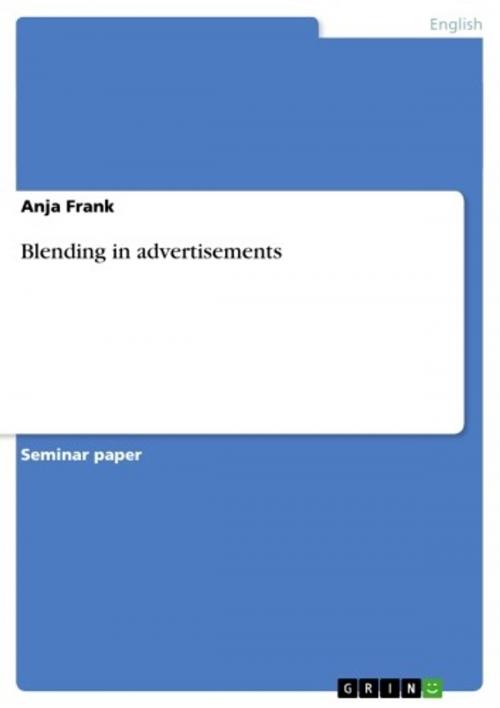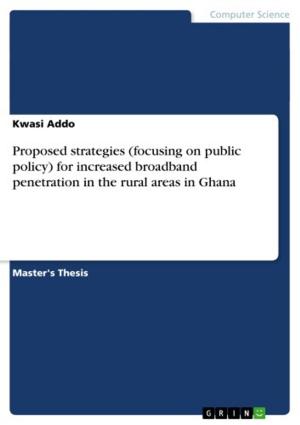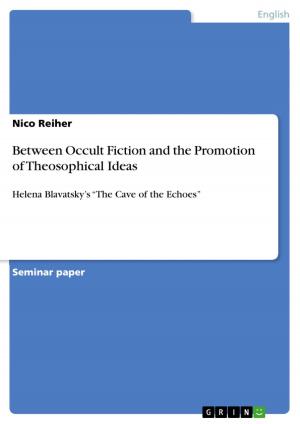| Author: | Anja Frank | ISBN: | 9783640122516 |
| Publisher: | GRIN Publishing | Publication: | July 30, 2008 |
| Imprint: | GRIN Publishing | Language: | English |
| Author: | Anja Frank |
| ISBN: | 9783640122516 |
| Publisher: | GRIN Publishing |
| Publication: | July 30, 2008 |
| Imprint: | GRIN Publishing |
| Language: | English |
Seminar paper from the year 2008 in the subject English Language and Literature Studies - Linguistics, grade: 1,3, University of Hamburg (Institut für Anglisitk und Amerikanistik), course: Cognitive English Grammar, 5 entries in the bibliography, language: English, abstract: That humans try to understand their environment by studying the available information is common knowledge, but how these processes of analyzing and understanding function within our brain is still a field that has not been entirely investigated, yet. Within the last years the interest of cognitive processes has grown enormously and has led to a whole new field of research. Inside this research field of cognitive grammar the theory of conceptual blending is the most interesting one for me. In my opinion, blending is an elegant way for creative processes. It illustrates the strong relationship between language and cognition. Furthermore, blends are an effective way to spread a message and to attract attention and curiosity towards an idea or a product. Examples of blends can be found in many sorts of situations, for instance, in cartoons, jokes, poetry or advertisements and there are many more situations which demonstrate the ubiquity of conceptual blending. Within this term paper, however, I want to concentrate on the field of advertisements. I will shortly present important information on conceptual blending and analyze two different ads according to the CB Theory developed by Gilles Fauconnier and Mark Turner. While studying and reading books about the topic I realized the crucial role of the recipients. Therefore, I started a survey with four test persons, wondering if all were able to decode the messages. I was also interested in their reaction towards the advertisements. I believe that this information is important when considering the effectiveness of the advertisements. That is why I have included their views and opinions below each analysis.
Seminar paper from the year 2008 in the subject English Language and Literature Studies - Linguistics, grade: 1,3, University of Hamburg (Institut für Anglisitk und Amerikanistik), course: Cognitive English Grammar, 5 entries in the bibliography, language: English, abstract: That humans try to understand their environment by studying the available information is common knowledge, but how these processes of analyzing and understanding function within our brain is still a field that has not been entirely investigated, yet. Within the last years the interest of cognitive processes has grown enormously and has led to a whole new field of research. Inside this research field of cognitive grammar the theory of conceptual blending is the most interesting one for me. In my opinion, blending is an elegant way for creative processes. It illustrates the strong relationship between language and cognition. Furthermore, blends are an effective way to spread a message and to attract attention and curiosity towards an idea or a product. Examples of blends can be found in many sorts of situations, for instance, in cartoons, jokes, poetry or advertisements and there are many more situations which demonstrate the ubiquity of conceptual blending. Within this term paper, however, I want to concentrate on the field of advertisements. I will shortly present important information on conceptual blending and analyze two different ads according to the CB Theory developed by Gilles Fauconnier and Mark Turner. While studying and reading books about the topic I realized the crucial role of the recipients. Therefore, I started a survey with four test persons, wondering if all were able to decode the messages. I was also interested in their reaction towards the advertisements. I believe that this information is important when considering the effectiveness of the advertisements. That is why I have included their views and opinions below each analysis.















